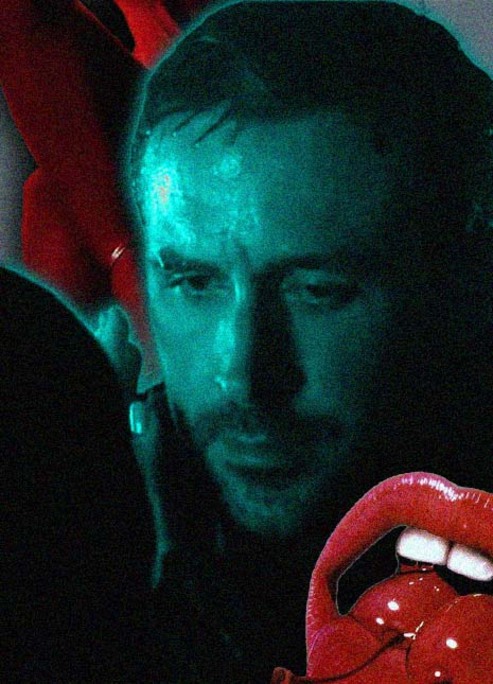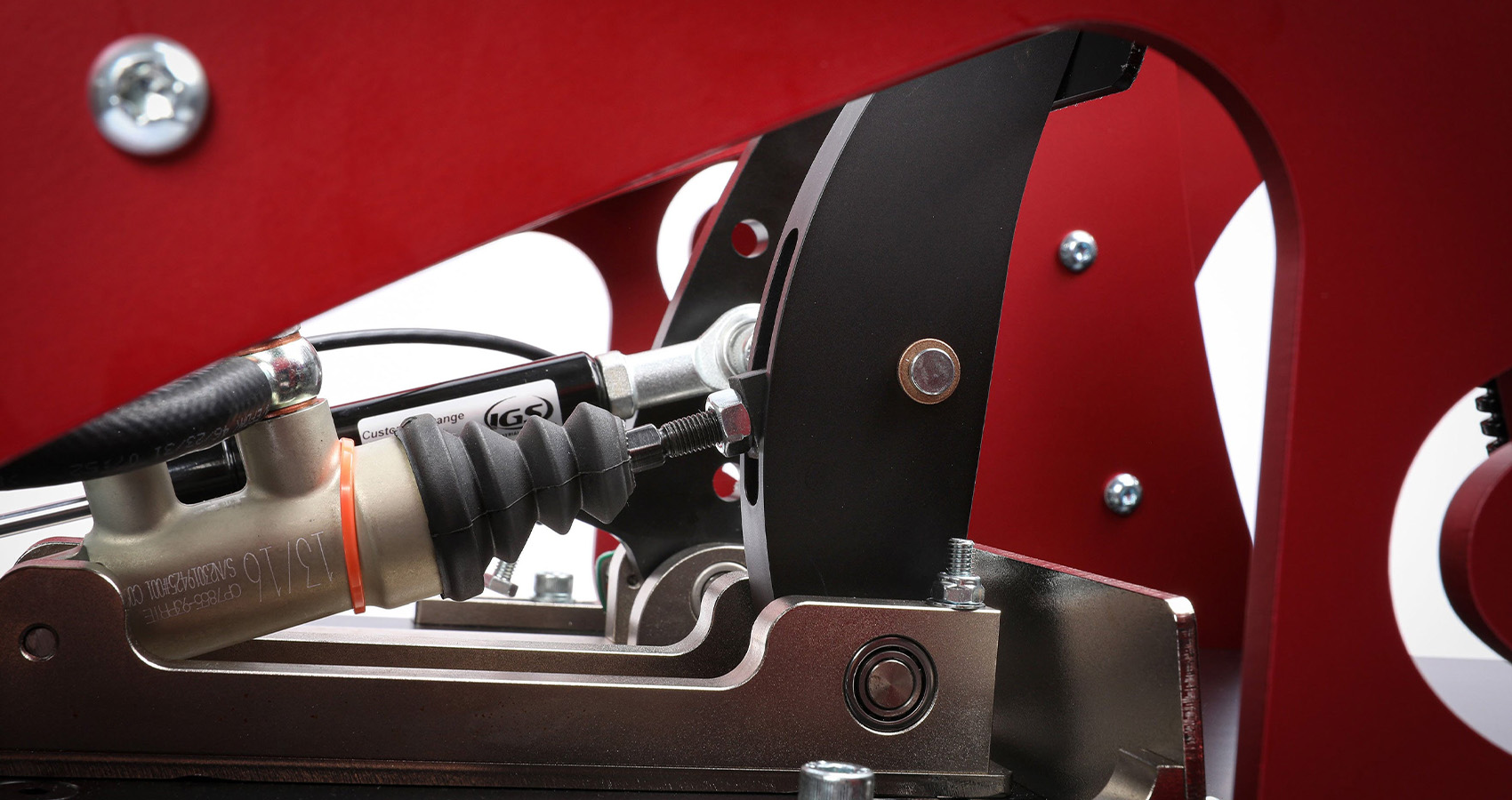
The Realism Of An F1 Simulator: A Deep Dive Into Pro-Level Training
How close does virtual racing get to reality?
Professional Formula 1 drivers earn millions, push machines worth £15 million to their absolute limits, and compete at speeds that would terrify most mortals. But here's something that might surprise you: they spend almost as much time in a simulator as they do on actual tarmac. I've been fortunate enough to experience some of these professional-grade simulators firsthand, and I can tell you — the technology is absolutely mind-blowing, though not quite as perfect as the marketing departments would have you believe.
The F1 simulator has evolved from basic computer setups to incredibly sophisticated machines that cost more than most people's houses. We're talking about systems that can replicate G-forces, tire degradation, weather conditions & even the subtle vibrations you'd feel through a steering wheel at Silverstone. Yet there's still that lingering question: just how realistic are they really?
The Technology Behind Professional F1 Simulators
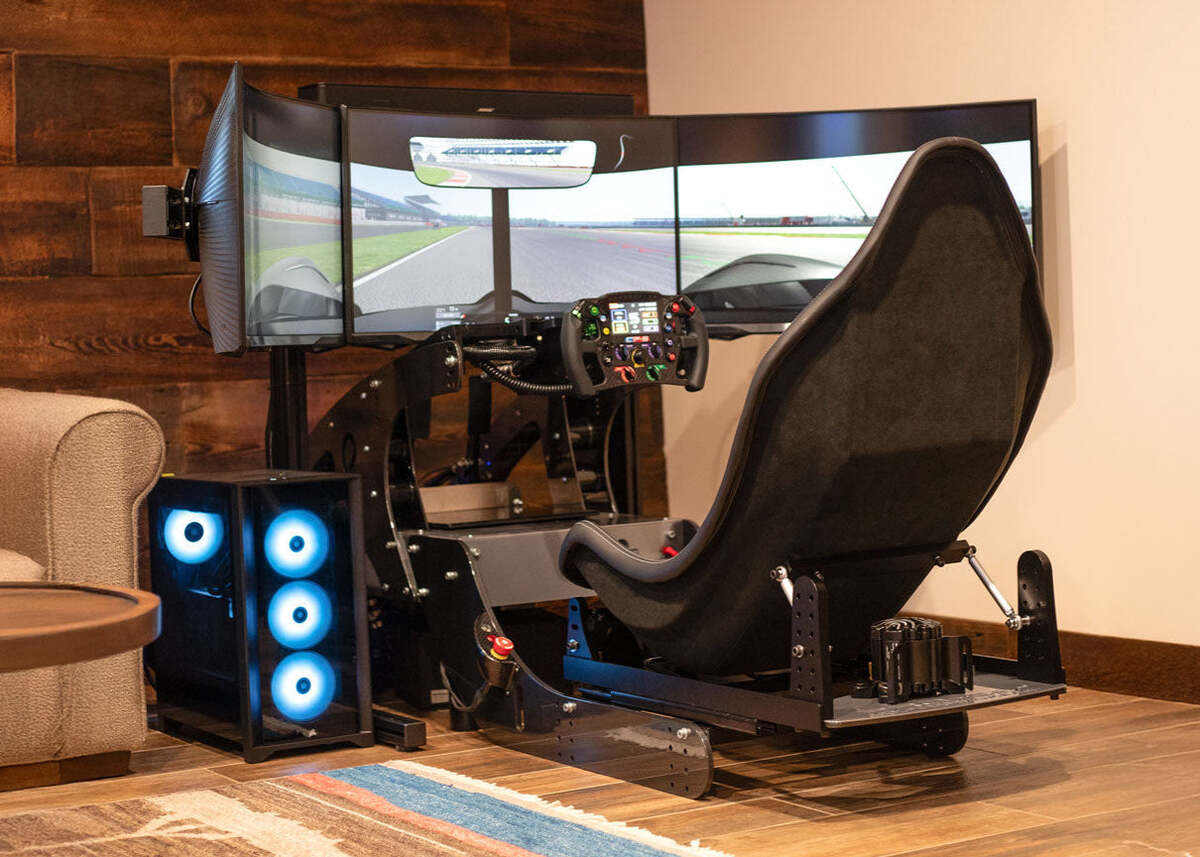
Walking into a top-tier F1 simulator facility feels like stepping onto a sci-fi film set. The centerpiece is usually a massive motion platform — think of it as a mechanical beast that can tilt, shake, and move in six different directions simultaneously. These hexapod systems use hydraulic actuators to create forces that simulate acceleration, braking & cornering loads.
The visual system is equally impressive. We're not talking about your typical gaming setup here. Professional simulators use projection systems with resolutions that make 4K look quaint, often wrapping around the driver's entire field of vision. Some facilities use curved LED screens that cost more than a decent house in Manchester.
But the real magic happens in the software. Teams like Mercedes and Red Bull have spent decades perfecting their simulation models, incorporating everything from aerodynamic data to tire compound behaviour. The physics engines process thousands of calculations per second, trying to replicate every bump, every aerodynamic shift, every minute change in grip levels.
I remember testing a mid-level professional simulator (nowhere near F1 standard, mind you) and being amazed at how the steering wheel communicated road surface changes. You could genuinely feel the difference between smooth asphalt and rougher patches. Though I'll admit, something still felt slightly... artificial? Hard to put your finger on exactly what.
Motion Systems and G-Force Replication

Here's something most people don't realise about F1 simulators: they can't actually replicate the full G-forces drivers experience on track. Physical limitations make it impossible. Real F1 cars generate lateral forces of up to 5G in corners, whilst even the most advanced simulators max out at around 1.5G to 2G.
So how do they compensate? Clever trickery, essentially. The motion systems use what's called "motion cueing" — combining physical movement with visual and audio cues to trick your brain into feeling forces that aren't actually there. It's surprisingly effective, though experienced drivers can usually tell the difference.
The motion platforms tilt strategically to simulate sustained G-forces. When you're braking hard into a corner, the platform tilts backward slightly, using gravity to create a sensation similar to deceleration forces. Brilliant engineering, really, but it has its limits.
Professional drivers often mention that simulator work helps with mental preparation and learning racing lines, but the physical conditioning? That still requires actual track time. Your body needs to experience genuine G-forces to build the necessary muscle memory and endurance.
Visual Fidelity and Track Accuracy
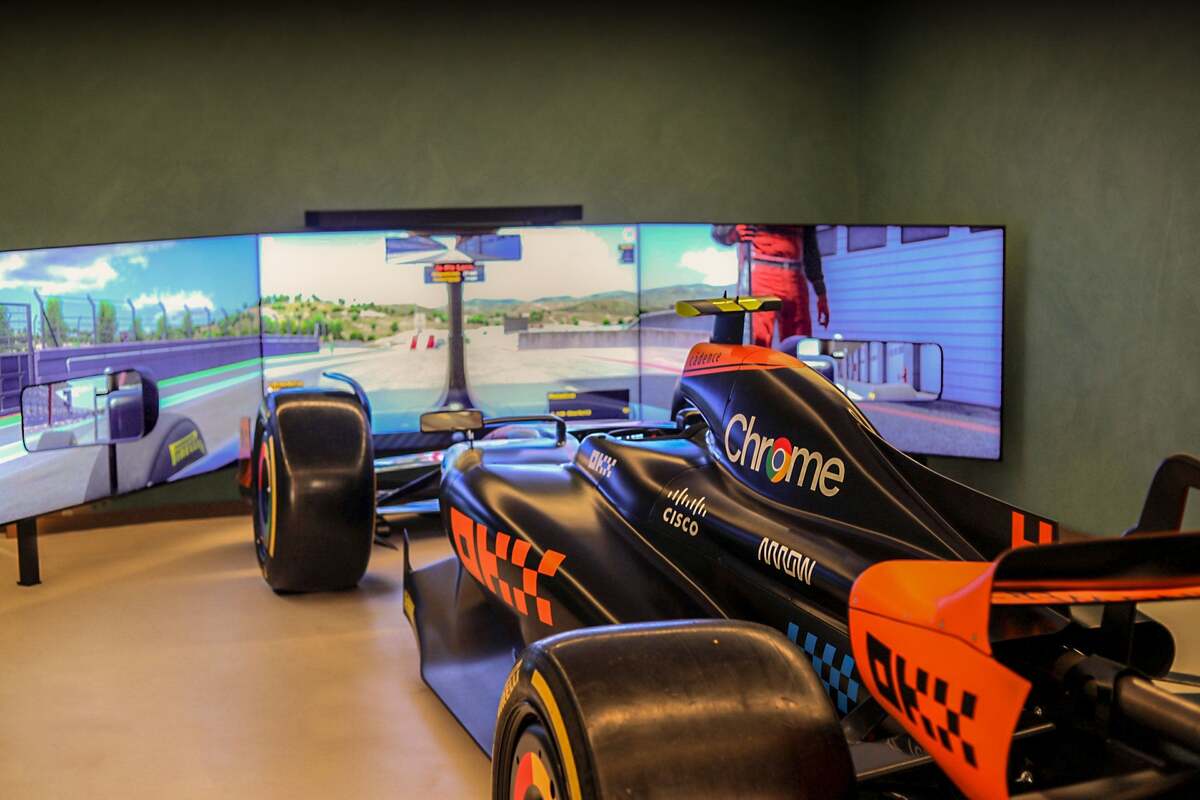
The visual reproduction in modern F1 simulators is genuinely stunning. Teams employ laser scanning technology to capture every millimetre of track surface detail. We're talking about accuracy levels measured in centimetres rather than metres.
Tracks like Monaco, with its infamous barriers and elevation changes, are recreated with obsessive attention to detail. Every kerb, every bump, every slight banking angle gets captured and translated into the virtual environment. The lighting systems even replicate how shadows fall at different times of day.
Weather simulation has become incredibly sophisticated too. Rain effects don't just change visibility — they alter grip levels progressively, create realistic spray patterns from other cars, and even simulate how water pools in specific track sections. I've watched drivers practice wet-weather techniques in simulators that looked almost indistinguishable from television coverage of actual races.
But here's the thing: your eyes can still detect subtle differences. The way light reflects off wet surfaces, the atmospheric haze on hot days, the particulate matter kicked up by tyres — these details are improving constantly but haven't quite reached perfect realism yet.
Force Feedback and Steering Precision
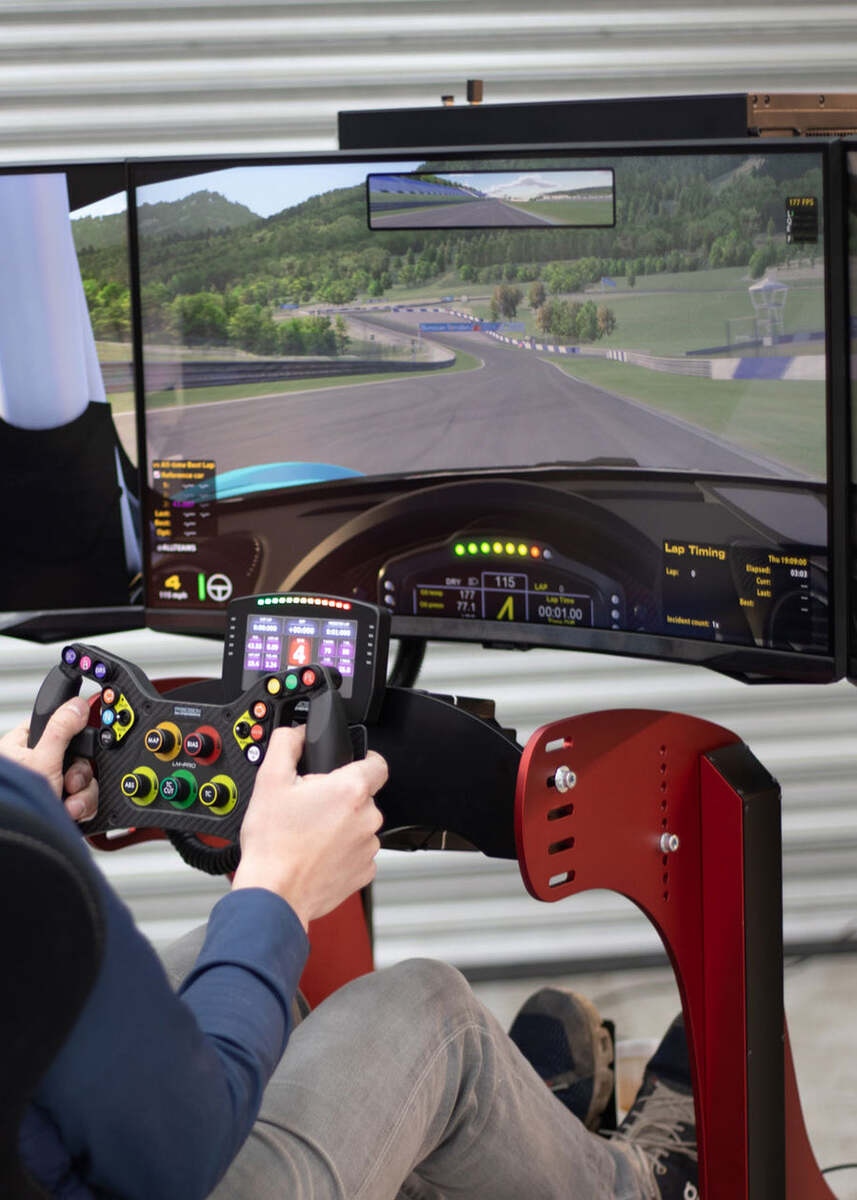
The steering systems in professional simulators are genuinely impressive pieces of kit. High-end direct drive motors provide force feedback that communicates tire grip levels, road surface changes, and aerodynamic loads through the steering wheel.
Modern systems can differentiate between understeer and oversteer sensations remarkably well. You'll feel the wheel go light when the front tyres lose grip, then experience the characteristic "snap" as the rear breaks away. It's not identical to the real thing, but it's close enough to be genuinely useful for training.
What's particularly clever is how these systems simulate power steering failure or varying levels of assistance. Different F1 cars have slightly different steering characteristics, and teams programme these nuances into their simulators with remarkable precision.
Though I must say, even the best force feedback can't perfectly replicate the organic feel of a real steering wheel connected to actual suspension components and tyres. There's a certain... digital quality that experienced drivers can detect. Subtle, but present.
Engine and Audio Simulation

Sound plays a crucial role in how drivers interact with their cars. Engine notes provide information about RPM, gear selection timing, and even potential mechanical issues. Professional simulators invest heavily in audio reproduction systems that would make audiophiles weep with joy.
The engine sounds in top-tier simulators are often recorded directly from actual F1 cars, then processed and layered to create realistic audio environments. Wind noise, tyre squeal, brake disc temperatures — all these auditory cues get incorporated.
Teams even simulate radio communications and pit-to-car chatter, helping drivers practice the multitasking required during actual races. The audio systems use spatial positioning to make engine notes from following cars seem to come from behind, whilst approaching vehicles create that characteristic Doppler effect.
What's fascinating is how audio can compensate for limitations in other sensory inputs. When the motion system can't perfectly replicate a particular sensation, strategic audio cues help fill the gap. Your brain naturally combines these inputs to create a more complete experience.
Training Applications and Skill Development
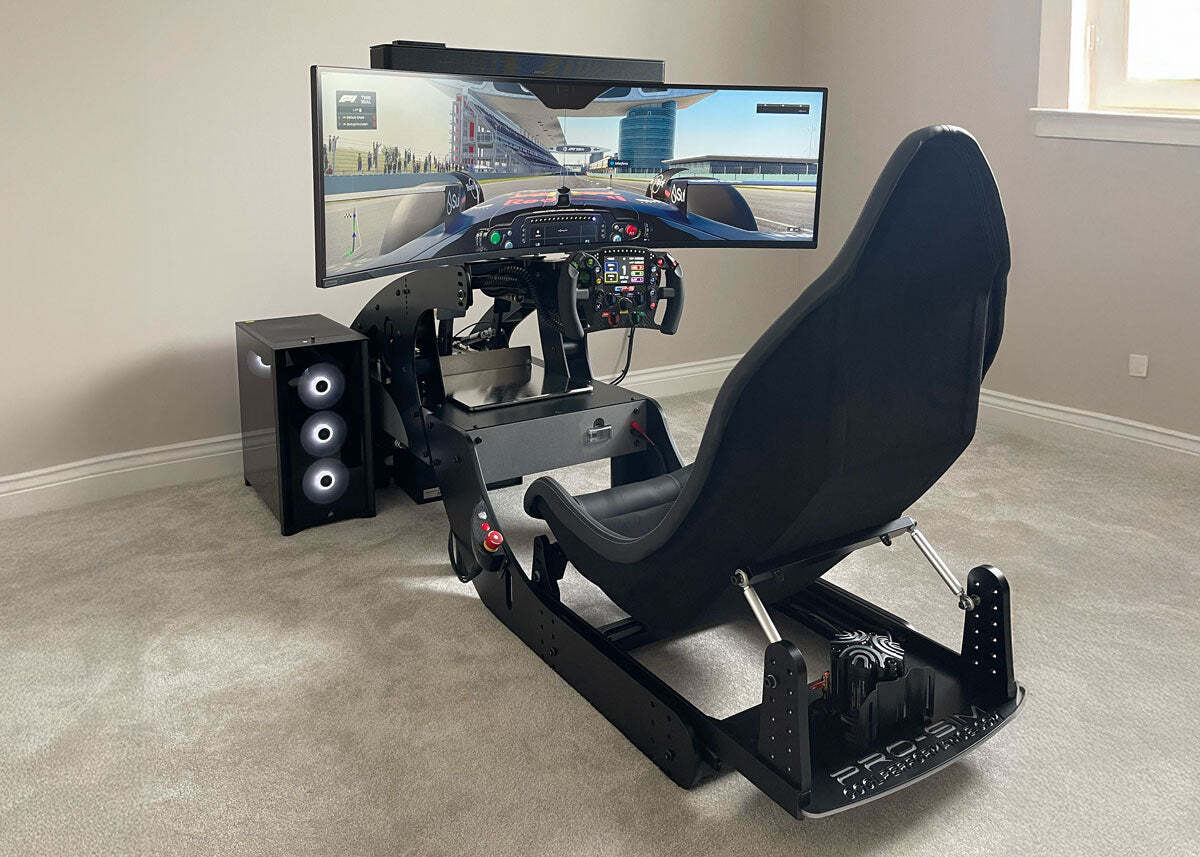
Professional F1 teams use simulators for far more than just entertainment. These machines serve as sophisticated training tools that allow drivers to practice specific scenarios repeatedly without the costs and risks associated with actual track time.
Race weekend preparation involves countless hours of simulator work. Drivers practice different racing lines, experiment with setup changes, and run through various strategic scenarios. What happens if it starts raining on lap 23? How should you approach an overtaking opportunity at Turn 14? These situations can be rehearsed endlessly.
Setup development is another crucial application. Teams can test different aerodynamic packages, suspension settings, and gear ratios virtually before committing to expensive track testing. The correlation between simulator predictions and real-world performance has improved dramatically over recent years.
New drivers particularly benefit from simulator training. Learning track layouts, understanding racing lines, and developing muscle memory for gear changes can all be accomplished more safely in a virtual environment. Though nothing truly prepares you for the physical demands of actual F1 racing.
I've spoken with several professional racing instructors who emphasise that simulators excel at cognitive training — teaching your brain what to expect and how to react. The physical conditioning and genuine seat-of-the-pants feel? That still requires real cars on real tracks.
Limitations and Reality Gaps

Despite all their technological sophistication, F1 simulators still have notable limitations. The most obvious is physical sensation — your body doesn't experience the genuine G-forces, the heat, or the physical fatigue that comes with actual racing.
Tire behaviour remains one of the most challenging aspects to simulate accurately. Real tyres heat up, degrade, and change characteristics in complex ways that depend on track temperature, driving style, and compound selection. Simulators approximate these changes, but they're still approximations.
Environmental factors like track evolution throughout a race weekend, rubber buildup on racing lines, and the subtle grip changes caused by oil or moisture are incredibly difficult to model precisely. These elements can significantly affect real-world performance but remain challenging for simulation software.
Risk perception is completely different too. Making aggressive moves or pushing absolute limits in a simulator carries no genuine consequences. This psychological difference affects how drivers approach certain situations, potentially creating habits that might not translate effectively to actual racing.
The cost factor can't be ignored either. Professional-grade F1 simulators cost anywhere from £500,000 to several million pounds. That's serious money, even for F1 teams with substantial budgets.
Final Thoughts
Professional F1 simulators represent some of the most advanced virtual reality technology available today. They're incredibly sophisticated training tools that provide genuine value for driver development, race preparation, and technical development.
Are they perfectly realistic? Not quite. But they're remarkably close in many respects, and the technology continues improving rapidly. The combination of motion systems, visual fidelity, force feedback, and audio reproduction creates experiences that are genuinely useful for professional training purposes.
For teams and drivers, simulators offer a cost-effective way to practice, experiment, and prepare without the expenses and risks associated with constant track testing. They're particularly valuable for cognitive training — teaching drivers what to expect and how to react in various scenarios.
The gap between simulation and reality continues shrinking, though I suspect there will always be subtle differences that experienced drivers can detect. Perhaps that's not entirely a bad thing — after all, nothing should completely replace the genuine thrill and challenge of actual racing.





